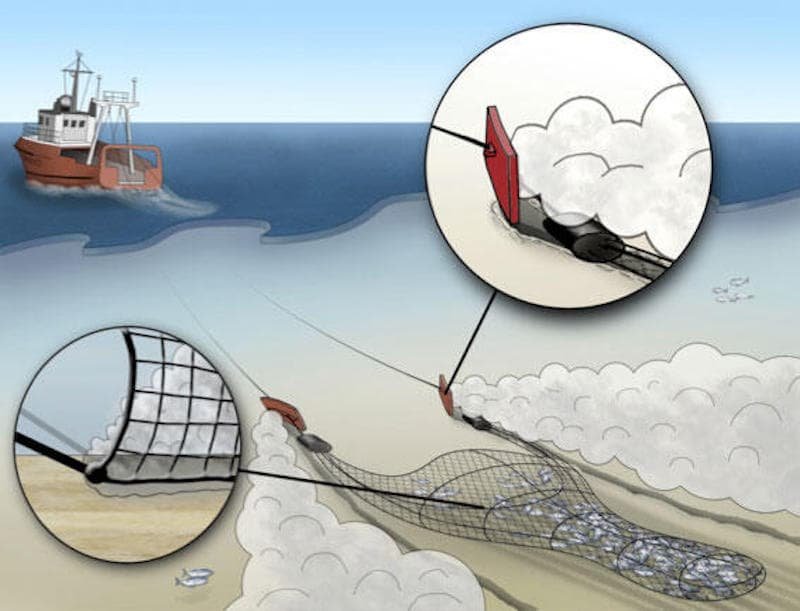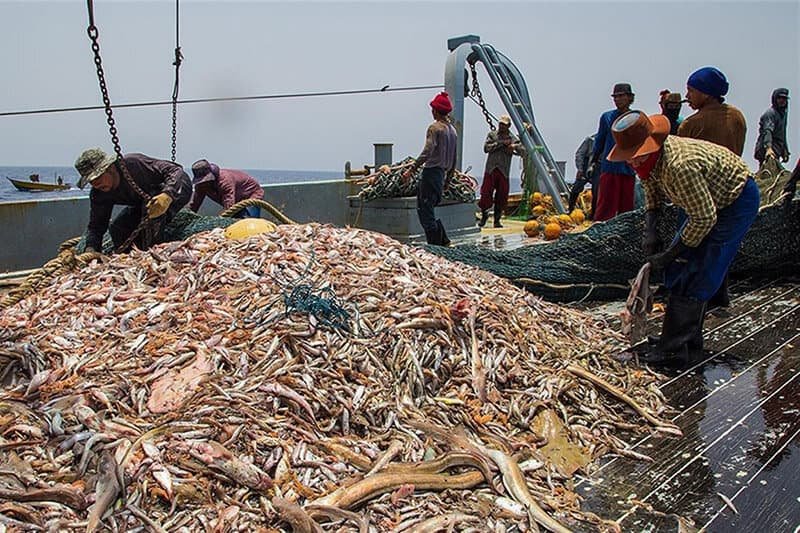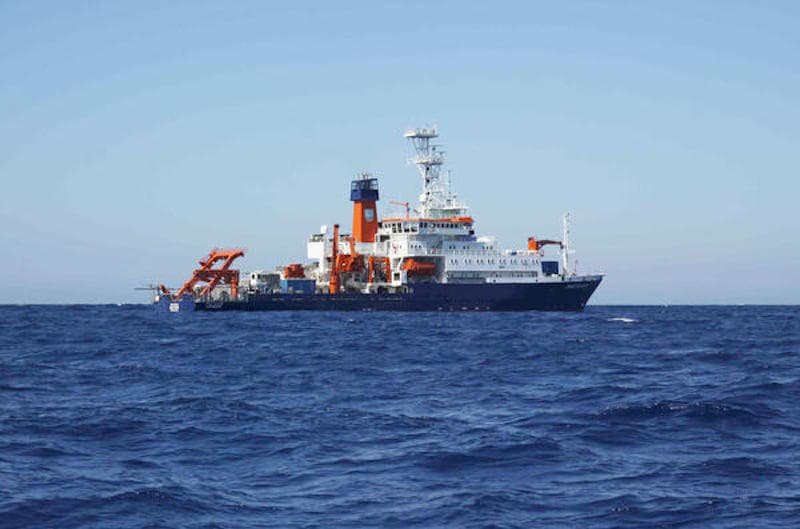
 Olivia Møller
Freediver - Activist - Explorer
Olivia Møller
Freediver - Activist - Explorer

 Olivia Møller
Freediver - Activist - Explorer
Olivia Møller
Freediver - Activist - Explorer
Bottom trawling, a widely practiced fishing method, involves dragging a weighted net along the seafloor to capture fish and other marine organisms. While this technique is efficient in harvesting large quantities of seafood, its environmental consequences on ocean ecosystems are increasingly alarming.
The mechanism of bottom trawling is a sophisticated yet highly impactful process that involves the use of specialized fishing gear designed to target species residing on or near the ocean floor. Understanding the intricate details of this method is crucial for grasping the environmental consequences it imposes on marine ecosystems.
In bottom trawling, the fishing gear employed is a complex ensemble designed to capture species dwelling on or near the ocean floor. This apparatus is predominantly comprised of an expansive net with variable-sized openings, tailored to the specific species being targeted. Weighted at its lower extremity, the net is crafted to ensure constant contact with the seafloor during the towing process.
Complementing this net structure are metal doors, colloquially known as otter boards, affixed to either side. These otter boards serve the crucial function of maintaining the net's horizontal openness as it is towed through the ocean. The deployment of this trawl gear is a process that sets the stage for the subsequent ecological repercussions.
The initiation of bottom trawling begins with the deliberate release of the fishing gear from a dedicated vessel. As the net descends to the seafloor, the otter boards dutifully uphold tension, facilitating the net's expansive spread over a significant underwater expanse. Subsequently, the fishing vessel tows the net along the seabed, ensnaring marine organisms that come into direct contact with the all-encompassing gear.

The weighty nature of the trawl gear, combined with the forceful towing action, precipitates profound disturbance within the benthic environment. This underwater landscape, often characterized by delicate structures such as corals, sponges, and other sessile organisms, undergoes substantial disruption due to the abrasive impact of the trawl gear. As the net is drawn across the seafloor, it indiscriminately captures not only the intended commercial species but also an extensive array of non-target species and habitat components.
Among the myriad consequences of bottom trawling is its direct impact on bottom-dwelling or benthic organisms. This includes various species of fish, invertebrates, and even microscopic life forms. The sweeping motion of the net leaves these organisms with minimal escape options, resulting in unintentional bycatch. Particularly susceptible to the deleterious effects of this method are fragile and slow-growing species, such as deep-sea corals. The trawl gear not only captures these organisms but can also physically disrupt their habitats, leading to enduring ecological repercussions.
The duration and intensity of bottom trawling operations constitute pivotal aspects of its overall mechanism. The temporal and spatial scope of these activities varies contingent upon the specific fishing grounds targeted and the desired catch. Some trawling endeavors may endure for extended periods, covering expansive sections of the seafloor. This prolonged and intensive activity exacerbates the extent of ecological impact, further complicating the recovery of ecosystems, especially those endowed with slow reproductive rates and limited resilience.

The repercussions extend beyond the immediate removal of non-target species. With the disruption of predator-prey relationships and the removal of critical components in the intricate marine food web, the very fabric of these ecosystems unravels. The delicate equilibrium that sustains biodiversity is destabilized, and the ripple effects are felt across various trophic levels.
Scientific inquiries into the aftermath of bottom trawling operations reveal a disheartening narrative of diminishing species richness and diversity in impacted regions. The unintentional removal of non-target organisms, many of which are essential for the health and resilience of marine ecosystems, contributes to the erosion of biodiversity on a scale that poses long-term threats to the sustainability of these intricate systems. Moreover, the slow recovery rates of impacted ecosystems amplify the severity of the biodiversity loss. The resilience of marine life is tested as habitats struggle to rebound from the extensive disturbances wrought by bottom trawling. Fragile species, crucial for maintaining the intricate balance of marine ecosystems, face challenges in re-establishing themselves, creating a void that reverberates through the intricate network of ecological relationships.
In the broader context, the implications of biodiversity loss extend beyond the immediate vicinity of trawling activities. The interconnectedness of marine ecosystems means that disturbances in one area can have cascading effects on adjacent regions. As biodiversity declines, the ability of marine ecosystems to adapt to environmental changes, withstand stressors, and recover from disturbances is significantly compromised.

The perils of bottom trawling extend beyond the loss of marine biodiversity, weaving a narrative of profound and lasting habitat destruction within of oceanic ecosystems. This ecological chapter, marked by the relentless alteration and degradation of essential habitats, speaks volumes about the collateral consequences of a fishing practice that reaches far beyond its intended targets.
The devastation is not confined to a single episode. The repetitive nature of bottom trawling, especially in areas with high fishing pressure, exacerbates the degradation of habitats. It is akin to subjecting the same piece of land to constant plowing, impeding the natural processes of recovery and regeneration. This sustained pressure impedes the ability of ecosystems to bounce back, leading to long-term consequences that echo through the intricate web of life beneath the waves.
Scientific research delves into the aftermath of bottom trawling, underscoring the slow recovery rates of impacted habitats. The resilience of these ecosystems is tested as they struggle to regenerate amidst the constant disturbance inflicted by trawl gear. The once-thriving seafloor habitats transform into barren landscapes, devoid of the diversity and complexity that once defined them.
The consequences of habitat destruction reverberate through the intricate relationships within marine ecosystems. Species that once found refuge in the shelter of coral structures or within the nooks and crannies of the seafloor are displaced. The disruption of essential habitats disrupts the availability of suitable breeding and feeding grounds, further amplifying the challenges faced by marine organisms in their struggle for survival.
In the broader context, the impact of habitat destruction extends beyond the immediate fishing grounds. The interconnectedness of marine ecosystems means that disturbances in one area can have cascading effects on adjacent regions. The loss of essential habitats impairs the ability of marine ecosystems to support diverse assemblages of life, compromising the resilience and adaptability of these delicate systems in the face of ongoing environmental changes.

At the surface level, bottom trawling indeed yields significant catches, providing a lucrative source of revenue for fishing industries worldwide. The allure of abundant harvests, often comprising a variety of commercial species, has led to the widespread adoption of this method. However, these seemingly bountiful yields can lead to a cascade of challenges for the very fisheries that rely on them.
A pivotal concern arising from bottom trawling is the inadvertent capture of non-target species. This collateral damage includes juveniles of commercial species, non-commercial organisms, and, alarmingly, even endangered or protected marine species. The unintended entanglement of these non-target individuals contributes to a disruption in the age and size structure of the captured populations. This, in turn, compromises the sustainable management of fisheries, as the balance within these populations becomes skewed.
The removal of non-target species, particularly juveniles, impedes the reproductive capacity of fish populations. As the trawl gear sweeps through the water, capturing organisms irrespective of their age or reproductive status, it undermines the natural replenishment mechanisms of fisheries. Over time, this can lead to a decline in the overall abundance of target species, affecting the long-term viability of the very fisheries that bottom trawling seeks to exploit.
Moreover, the indiscriminate nature of bottom trawling poses a threat to the biodiversity of the oceans, with the potential for overfishing. The removal of a broad spectrum of marine life, including species that play crucial roles in maintaining the balance of ecosystems, can disrupt the delicate web of life beneath the waves. As fisheries exploit these ecosystems intensively, the risk of depleting fish stocks looms large.
The Food and Agriculture Organization (FAO) underscores the importance of adopting sustainable fishing practices to ensure the resilience of fisheries. The sustainability of fishing operations is contingent upon the delicate equilibrium between harvesting and replenishment. Overreliance on bottom trawling, especially in sensitive areas or habitats, jeopardizes this equilibrium and places fisheries on a precarious trajectory.
To address these concerns, scientific assessments and fisheries management strategies become indispensable tools. Organizations such as the World Wildlife Fund (WWF) advocate for the implementation of measures that prioritize the conservation of marine biodiversity and the sustainable use of fisheries resources. The emphasis shifts towards adopting more selective and targeted fishing methods that minimize bycatch and reduce the ecological footprint of fishing operations.

A beacon of hope emerges in the form of conservation efforts and regulatory frameworks. These concerted endeavors, driven by the recognition of the urgent need to safeguard marine ecosystems, constitute a crucial chapter in the ongoing narrative of responsible resource management.
Governments and international bodies, cognizant of the environmental threats posed by bottom trawling, have embarked on a journey to establish regulations aimed at mitigating its impact. The United Nations General Assembly, in a collective acknowledgment of the need to protect vulnerable marine ecosystems, passed a resolution, a clarion call for responsible fishing practices, that underscores the imperative of curbing destructive methods such as bottom trawling to ensure the sustained health of our oceans.
Regional fisheries management organizations, reflective of the global community's commitment to responsible resource management, have spearheaded localized initiatives. These measures encompass restrictions on the use of trawl gear in areas identified as particularly sensitive, with the aim of safeguarding critical habitats and vulnerable species. The essence lies in striking a balance between harvesting the riches of the oceans and preserving the delicate equilibrium within marine ecosystems.
The World Wildlife Fund (WWF), a prominent advocate for the conservation of biodiversity, has been at the forefront of campaigns urging for the reinforcement and enhancement of existing regulations. The WWF emphasizes the importance of robust enforcement mechanisms to ensure compliance with established guidelines. Their efforts extend beyond mere advocacy, delving into collaborative ventures with governments, stakeholders, and the fishing industry to foster a collective commitment to responsible practices.
While regulations set the stage for responsible fishing, the efficacy of these measures relies on the willingness of the global community to embrace a paradigm shift in their approach to harvesting marine resources. Conservation efforts gain momentum through the active engagement of stakeholders, including fishermen and fishing communities. Initiatives that promote awareness, education, and the adoption of sustainable alternatives serve as catalysts for change, inspiring a collective ethos of stewardship toward the oceans.

Technological innovation, a beacon of hope in this narrative, seeks to redefine the paradigm of bottom trawling. Selective gear modifications, a product of cutting-edge engineering, stand as a testament to human ingenuity. By fine-tuning the design of fishing gear, experts explore solutions that enhance selectivity, targeting specific species while minimizing the capture of non-target organisms. Mesh size optimization, informed by a nuanced understanding of marine biology, emerges as a promising avenue to reduce bycatch and mitigate the inadvertent impacts on vulnerable species.
Beyond the realm of gear modifications, advancements in surveillance technology herald a new era of monitoring and accountability. Satellite-based tracking systems, coupled with artificial intelligence algorithms, empower authorities to monitor fishing vessels in real-time. This heightened vigilance not only aids in enforcing existing regulations but also serves as a deterrent against illegal, unreported, and unregulated (IUU) fishing practices, thereby bolstering the efficacy of conservation measures.
Parallel to these technological strides, the exploration of sustainable alternatives gains momentum. The imperative to move beyond the conventional methods of bottom trawling underscores the resilience of human innovation in the face of ecological challenges. Trap fisheries, characterized by the deployment of baited traps on the ocean floor, emerge as a less intrusive alternative. This method, inherently more selective, reduces the unintended capture of non-target species, offering a glimpse into a more sustainable future for seafood harvesting.
The narrative unfolds with collaborative initiatives between researchers, conservationists, and the fishing industry. The bridging of these diverse stakeholders reflects a shared commitment to explore and implement sustainable alternatives. As communities reliant on fishing livelihoods become integral partners in this journey, a sense of collective responsibility emerges. The exchange of knowledge, experiences, and best practices becomes a conduit for a paradigm shift towards a more sustainable and equitable relationship with the oceans.